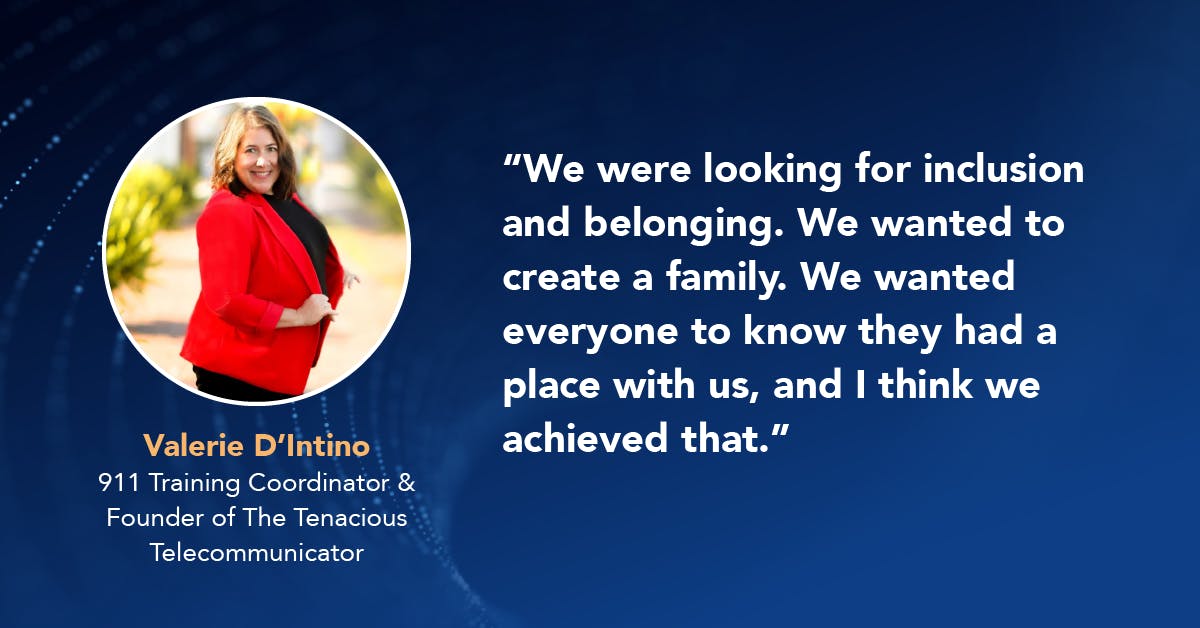In Conversation with The Tenacious Telecommunicator: Tackling Growing Pains in 911 Centers


Fifty-seven years ago, on February 16, 1968, the first official 911 call was made in Haleyville, Alabama, marking the start of the emergency service we rely on in the U.S. today.
Since then, technology has come a long way, with 911 centers now handling multi-channel emergency interactions and navigating multiple challenges.
Casey Rives, Verint’s Solution Consultant, recently sat down with Toby Akers Jr and Valerie D’Intino, 911 Training Coordinators and Founders of The Tenacious Telecommunicator community and the Triple T Conference. The group discussed tips and tactics around tackling the growing pains 911 centers are facing today. Let’s see snippets of this insightful conversation!
Creating Community in the 911 Industry
Casey: Today I have with me Toby and Valerie from The Tenacious Telecommunicator. I want to bring them on to have a conversation about creating community in the 911 center, as well as what they are and what The Tenacious Telecommunicator stands for. I think that those communities are important. So to get started, how did this come about?
Toby: I was attending the Virginia APCO-NENA conference in Roanoke and was attending a pre-conference class. One of the activities was to say an adjective to describe you that began with the same letter as your first name. I was trying to think of all these adjectives that started with T. I was thinking “talkative Toby”, and Valerie and I were sitting next to each other, and she was, like, “tenacious”. So I said Hi, I’m tenacious Toby.
After that conference and a couple of other events, I was thinking that I could do something like this. I’m already teaching and speaking, so that’s where The Tenacious Telecommunicator was born to really bring community together and people together in the 911 industry.

Casey: What do you think makes The Tenacious Telecommunicator community different?
Valerie: There are lots of 911 communities that are vibrant, and we’re a little bit unique because we’re small. We were looking for inclusion and belonging. We wanted to create a family. We wanted everyone to know they had a place with us, and I think we achieved that.
Toby: We wanted people to be able to connect, bring people together, really bring their full selves to the conference and be able to connect in a different way. We also wanted to focus on areas that don’t always have access to the same opportunities that other areas do.

Shifting From Reactive to Proactive 911 With the Help of Technology
Casey: With staffing challenges but also the new technology that we know is needed, I would say 911 has always been reactive rather than proactive. And I think we’re trying to change that. Are you utilizing any new technology or seeing the benefit of automated processes within your industry?
Valerie: We moved to ESInets last summer and location services made it speedier and more dependable. Of course, we also have RapidSOS, but that has been the biggest advance. If we’re going to talk about technology and being a dinosaur in 911, location services has been it for me.
Toby: We’re always wanting to be on the cutting edge of different technology and different things. My manager is very adamant about making sure that we have the best and the greatest technology available to our staff and the resources available to our staff. There are so many different technological aspects that really make our industry so much easier, and the jobs of our telecommunicators so much easier. We’re super supportive of the funding for Next-Gen 911 to make sure smaller agencies have access to the same technology as large localities that have a good tax base.
Casey: I don’t think people realize the weight of the world that’s on the shoulders of call takers and dispatchers—that it’s not just answering a call. That’s why when I make speeches about technology, I try to talk about how it’s there to help because you are answering 911 calls but also non-emergency calls—also putting in warrants for people or maybe doing extra. We’re all like Inspector Gadget.
People don’t realize that behind the scenes, all of that is going on. That’s why being able to automate things like non-emergency calls or the quality process or help [with training processes] is so important, because the general public doesn’t realize everything you all do behind the scenes.

Valerie: I don’t sit in that seat every day. But when I’m needed, I do, and some other capacities as well–and it hasn’t gotten easier. It turns out it’s still a hard job. I am surrounded by so many talented people and feel very lucky. I want to find ways to keep them in the seats.
Toby: I’m not in that seat every day like some of my team members are. I’m training and things like that, but they’re answering those difficult calls each and every day, and they deserve to be recognized for that. And technology has helped them ease the burden a little bit, but we still have lots more to do and lots more to go. Make sure that they’re well, they’re recognized at home, and we’re always looking for ways to improve that sense of community in the industry and provide extra training.
Casey: Your passion for 911 definitely shows, and tenacious I think is the word that describes all of 911—over especially the past two years, because there’s been so much change in playing catch up with processes. And as you mentioned, keeping those folks in the seat. I always say in public safety, recruitment is important, but retention is way more important—because you never get that experience back of those dedicated first responders.

Thank you for all the tenacious telecommunicators behind the headsets for their life-saving work. Verint is dedicated to providing public safety answering points (PSAPs) with the cutting-edge technology 911 telecommunicators deserve.
Learn more about Verint’s solutions for public safety here.